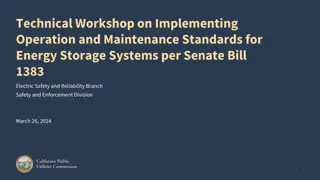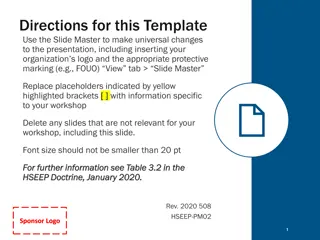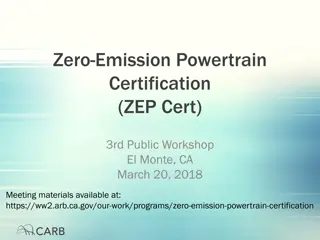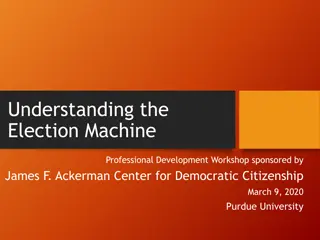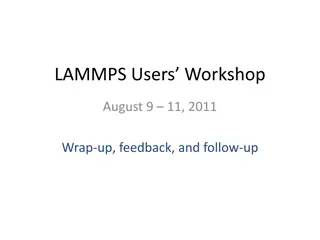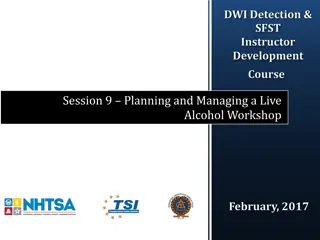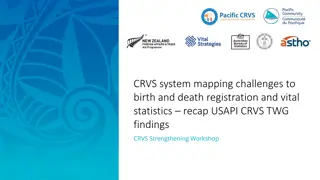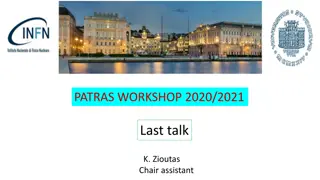
Understanding Inclusive Teaching Strategies
Explore the Wave Model for inclusive education, focusing on quality-first teaching, adaptive strategies, and the role of teaching assistants. Learn how to implement universal, targeted, and specialized interventions to support all learners effectively.
Download Presentation

Please find below an Image/Link to download the presentation.
The content on the website is provided AS IS for your information and personal use only. It may not be sold, licensed, or shared on other websites without obtaining consent from the author. If you encounter any issues during the download, it is possible that the publisher has removed the file from their server.
You are allowed to download the files provided on this website for personal or commercial use, subject to the condition that they are used lawfully. All files are the property of their respective owners.
The content on the website is provided AS IS for your information and personal use only. It may not be sold, licensed, or shared on other websites without obtaining consent from the author.
E N D
Presentation Transcript
Welcome To Week 4! Welcome To Week 4! A Meaningful SEND Strategy
The Wave Model: A Metaphor for Inclusion and Intervention 3. Specialised Personalised, tailored interventions, including alternative provision. 2. Targeted Intervention to support children to meet age-related expectation. 1. Universal Inclusive, quality-first teaching for all. High quality teaching that is differentiated and personalised will meet the individual needs of the majority of children and young people. (Code of Practice, p.22).
Quality-First Teaching Welcome, warmth and positivity. Vigilance: humans can become vulnerable Positive consistency and routine Know your pupils and their individual profiles Remembering the most able pupils, too. Making data work for you. Capitalise on TA knowledge and expertise. Grouping / ability clustering any glass ceilings? Translanguaging: multilingual students embracing your EEF, Five A Day
Adaptive Teaching is just the new term for Differentiation theyre Adaptive Teaching is just the new term for Differentiation they re always change things for the sake of it. always change things for the sake of it. Sorry; not this time. Sorry; not this time. A teacher creates work of different pitches ; the work is more complicated to cognitively absorb. A teacher creates assessment opportunities of differing levels of expectations. A pupil gets to know what they are expected to achieve. They understand others may be working at a harder or easier level. A teacher sets aspiration for all the class; there is a broadly single aim for everyone. Irrespective of ability strength or need all pupils are invited to attempt this challenge, with the support they need. The support may come in the form of extra scaffolding or learning style/preference (in my opinion).
The Role of the Teaching Assistant The Velcro Model of support student and adult stuck to each other, day in, day out. (Gerschel, 2005). Teaching Assistants are still the main prop of Inclusion. (Webster and Blatchford, 2017) HLTAs can teach theclass whilst the teacher supports those students most needing support. SEND and lower-ability children are mainly taught by TAs. * TAs are expected to know everything sometimes with no notice. TAs and HLTAs gain incredible knowledge and insight into the pupils they work with, informing the teacher s planning and delivery. Is pupil withdrawal from class, to work with a TA, inclusion or exclusion?
Additional Adults: The Code of Practice says 1.24 Special educational provision is underpinned by high quality teaching and is compromised by anything less. 6.36 Teachers are responsible and accountable for the progress and development of the pupils in their class, including where pupils access support from teaching assistants or specialist staff. 6.52 The class or subject teacher should work closely with any teaching assistants or specialist staff involved, to plan and assess the impact of support and interventions and how they can be linked to classroom teaching.
All of these comments are from real life. All of these comments are from real life . Which did the teachers say? Which did the TAs say? Which did the teachers say? Which did the TAs say? Miss Woodall, can you help Ollie and Fran with the sheet on geological formation? Don t worry, it s fairly self-explanatory. I have to stay here and help Jenny; I m her one- to-one. She s not ready to be stretched any further; it upsets her and she ll kick off. This work level suits her. So, Mrs Jones, if you can take your group outside now, please..? Ah, don t worry about working with Sarah - Mr. Evans always works with her and he knows what she needs. I always work with this group and I ve built up a good relationship with them. I can t take new ones, I don t know them. OK, Mr Bennett; if you think they need more work on this, that s fine. I wouldn t have done it that way; you d be better off
Jenny Exceeds Expectation in most subjects... She has a superb understanding of Maths, English and most of her Science work. She just happens to have Dyslexia too. Extensive writing makes her frustrated and tired. She usually ends up with an awful headache. How could we help Jenny remove the barriers to Exceeding Expectation in written work, as well as verbally?
The Wave Model: A Metaphor for Inclusion and Intervention review assess plan do review assess plan do 3. Specialised Personalised, tailored interventions, including alternative provision. Assess Plan Do 2. Targeted Intervention to support children to meet age-related expectation. Pupil needs more than adaptive teaching, so we move to High quality teaching that is differentiated and personalised will meet the individual needs of the majority of children and young people. (Code of Practice, p.22).
The Wave Model: A Metaphor for Inclusion and Intervention Review Assess Plan Do Review Assess Plan Do 3. Specialised Personalised, tailored interventions, including alternative provision. Assess Plan Do Pupil needs more than targeted support, so we move to Pupil needs more than adaptive teaching, so we move to High quality teaching that is differentiated and personalised will meet the individual needs of the majority of children and young people. (Code of Practice, p.22).
Wave 3: Specialised, tailored provision: Wave 3: Specialised, tailored provision: May include: Visiting specialist support (e.g. SALT). Counselling/MH support Alternative / reduced timetabling Alternative Provision Education, Health, Care Plan will usually be in place / in process.
The Local Offer The Local Offer An increased multi-disciplinary approach, reflecting the new Education, Health and Care Plan. The services/specialists/institutions within a Local Authority are required to outline the contribution ( offer ) they can make in supporting and meeting needs within their locality. The Local Offer is published on every LA s website. The Code of Practice and sector leaders/specialists agree on the importance of the quality-first, inclusive approaches. If further support beyond quality-first, inclusive strategies is needed, monitoring takes place and, if needed, an Educational Psychologist s opinion and recommendation can be sought. This may possibly result in an EHC Plan. The process above is known as the Graduated Response/Approach.* *NASEN: SEN Support & The Graduated Approach
Mainstream? Special? Alternative? Mainstream? Special? Alternative? Stock Images
What Works When School Doesnt? What Works When School Doesn t? Local Authorities are responsible for arranging suitable education for permanently excluded pupils, and for other pupils who because of illness or other reasons would not receive suitable education without such arrangements being made. Governing bodies of schools are responsible for arranging suitable full-time education from the sixth day of a fixed period exclusion. Schools may also direct pupils off-site for education, to help improve their behaviour. Statutory guidance sets out the Government s expectations of local authorities and maintained schools who commission alternative provision and pupil referral units. The Government expects those who are not legally required to have regard to the statutory guidance to still use it as a guide to good practice. DfE Alternative Provision: Statutory Guidance for Local Authorities
What What is is Alternative Provision? Alternative Provision? For the purposes of this guidance, the definition of alternative provision is as follows: education arranged by local authorities for pupils who, because of exclusion, illness or other reasons, would not otherwise receive suitable education; education arranged by schools for pupils on a fixed period exclusion; and pupils being directed by schools to off-site provision to improve their behaviour. DfE Alternative Provision: Statutory Guidance for Local Authorities https://assets.publishing.service.gov.uk/media/5fcf72fad3bf7f5d0a67ace7/alternative_provision_ statutory_guidance_accessible.pdf
Cheshire East website https://www.cheshireeast.gov.uk/livewell/education-employment-and-money/alternative-education- provision/alternative-education-provision.aspx
DfE Guidance on those children not attending school DfE Guidance on those children not attending school DfE Arranging education for children who cannot attend school because of health needs, 2023 https://assets.publishing.service.gov.uk/media/657995f0254aaa000d050bff/Arranging_education _for_children_who_cannot_attend_school_because_of_health_needs.pdf DfE Promoting the Education of Look after and previously looked after children 2018 https://assets.publishing.service.gov.uk/media/5a9015d4e5274a5e67567fbe/Promoting_the_edu cation_of_looked-after_children_and_previously_looked-after_children.pdf DfE Elective Home Education, 2019 https://assets.publishing.service.gov.uk/media/5ca21e0b40f0b625e97ffe06/Elective_home_educa tion_gudiance_for_LAv2.0.pdf
Good Alternative Provision Good Alternative Provision appropriately needs of pupils which required its use and enables them to achieve good attainment on par with their mainstream peers. All pupils must receive a good education, regardless circumstances or the settings in which they find themselves. Provision will differ from pupil to pupil @ meets the educational of their
The Virtual School / The Virtual Headteacher The Virtual School / The Virtual Headteacher The Virtual School is so called because it is conceptual ; its pupils are those children in the care of the Local Authority and also those with a social worker. Each L.A. has a Virtual School. TVH monitors the education and wellbeing of these pupils. They will liaise with the Headteachers of mainstream and special schools, Pupil Referral Units and other providers. TVH is a champion for cared for and vulnerable children. They are a roving quality assurance of standards; they check that the expectations mentioned in the previous slide are met. In short, they ensure that aspiration is in place for the most vulnerable children.
Children Missing Education (CME) Children Missing Education (CME) In Summer 2023, L.A.s reported an estimated 28,100 children missing education. DFE Children Missing Education, https://explore-education-statistics.service.gov.uk/find-statistics/children-missing- education Gov.uk Teaching Blog https://teaching.blog.gov.uk/2023/06/12/preventing-identifying-and-supporting- children-missing-education/
Special Needs Jungle Special Needs Jungle
N Not in ot in E Education, ducation, E Employment or mployment or T Training raining Estimated NEET January - March 2023 295,000: around 40,000 more young men than women Long-term scarring (Ralston et al) Well-documented links to poorer health and poorer life chances Increased reports of SEMH (1 in 5) coinciding with decreased self-confidence Around 8% of NEET also have identified SEND, including Autism All types of health problems are over-represented in NEET
Ive come to the frightening conclusion that I am the decisive element in the classroom. It s my personal approach that created the climate. It s my daily mood that makes the weather. As a teacher, I possess tremendous power to make a student s life miserable or joyous. I can be a tool of torture, or an instrument of inspiration. I can humiliate or humour, hurt or heal. In all situations, it is my response that decides whether a crisis will be escalated or de-escalated and a student humanized or de-humanized.
Reflections Your 250 words: What do you see as the key elements which are needed to make our classroom, local and national SEND strategies work? Next time: Emotional Intelligence Outdoor Learning Workshop, Saturday 29th June, 10am 4.30pm: https://rise.mmu.ac.uk/article/play-and-outdoor-learning/


